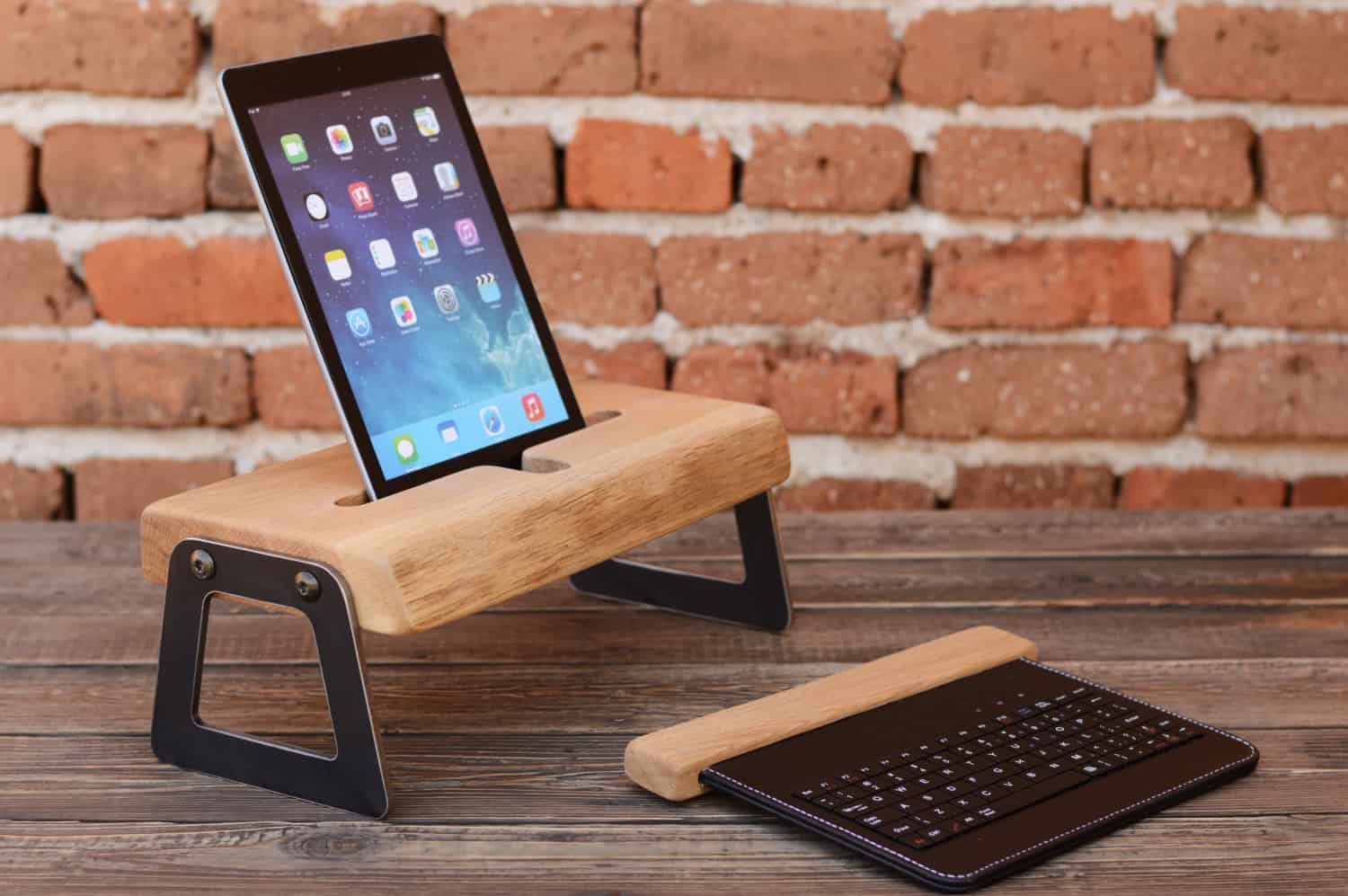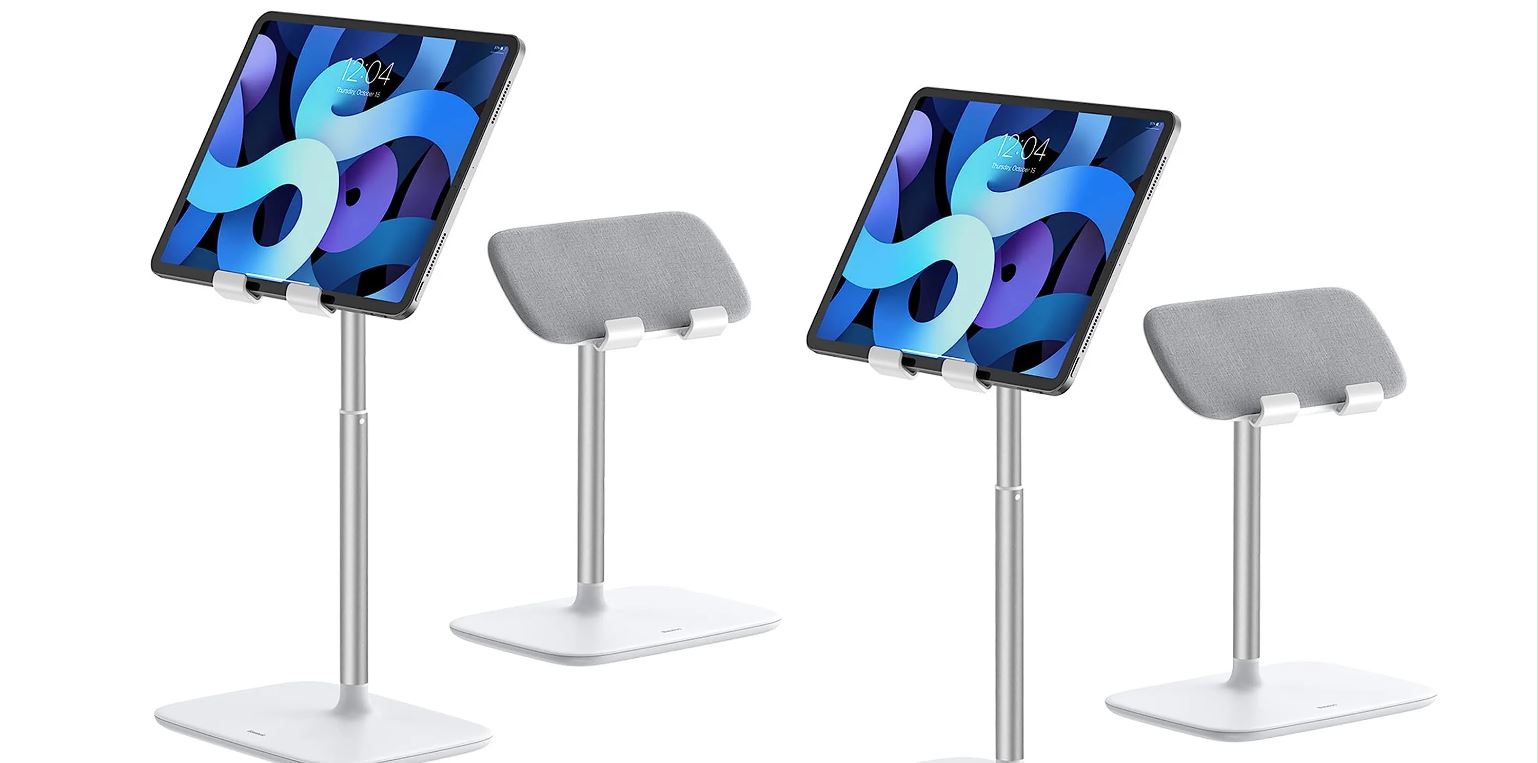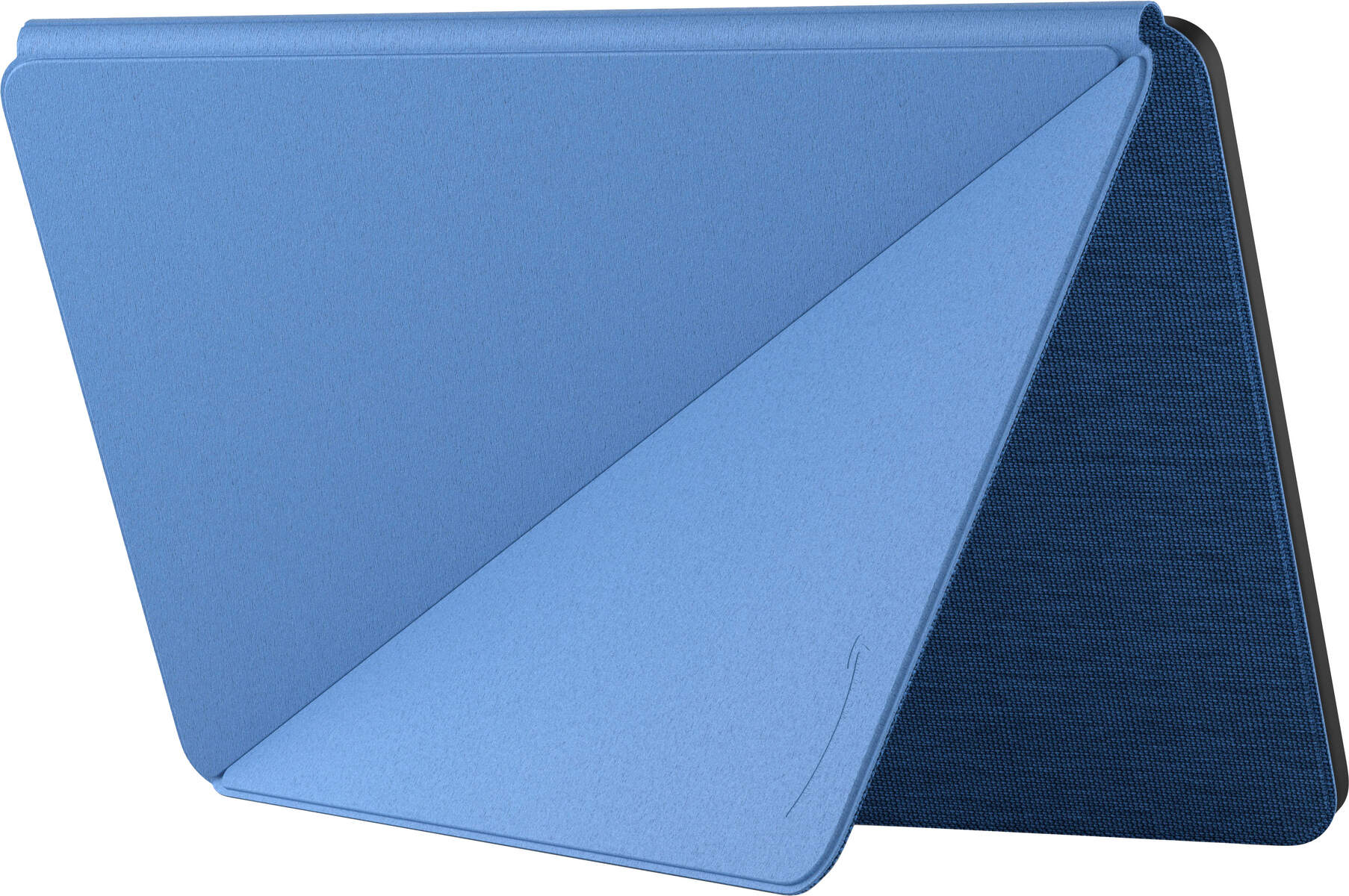Introduction
Welcome to the world of DIY tablet stands! In today’s tech-driven world, tablets have become an integral part of our lives. They provide us with endless opportunities for entertainment, productivity, and creativity. Whether you enjoy watching movies, reading eBooks, or following step-by-step recipes in the kitchen, having a convenient and sturdy tablet stand is essential.
While there are countless tablet stands available in the market, why not put your creative skills to use and build your own? Not only will it be a rewarding and fulfilling project, but it will also cater to your specific needs and preferences.
In this article, we will guide you through the process of designing and constructing your very own tablet stand. With just a few basic materials and some handy tools, you’ll have a functional and stylish tablet stand ready in no time.
So, grab your tools, roll up your sleeves, and let’s get started on this exhilarating DIY journey!
Materials Needed
Before we begin the construction of your DIY tablet stand, let’s gather the necessary materials. Here’s a list of items you’ll need:
- Wood: Choose a sturdy and durable wood material, such as oak or pine. The dimensions will depend on the size of your tablet and the design you have in mind.
- Saw: A handsaw or a power saw, depending on your comfort and expertise level.
- Sandpaper: Different grits of sandpaper to smooth the edges and achieve a polished finish.
- Wood Glue: A strong wood glue to join the pieces together securely.
- Clamps: These will help hold the pieces in place while the glue dries.
- Measuring Tape: Essential for accurate measurements to ensure a perfect fit for your tablet.
- Pencil: To mark the dimensions on the wood before cutting.
- Finishing: You have the option to stain or paint the wood to enhance the appearance of your tablet stand.
- Brushes: Required if you choose to apply stain, paint, or any other finishing material.
- Protective gear: Safety glasses and gloves to ensure your safety during the construction process.
Remember, these are just the basic materials required for a simple tablet stand. Depending on your design and creativity, you may choose to add additional embellishments or accessories to personalize your stand.
Now that you have gathered all the necessary materials, let’s move on to the next step of designing your tablet stand.
Step 1: Gather the Necessary Tools
Before embarking on your DIY tablet stand project, it’s crucial to have the right tools at your disposal. Having the appropriate tools will make the construction process smoother and more efficient. Here are the essential tools you’ll need:
- Saw: Choose a handsaw or a power saw based on your comfort level and the complexity of the design. A handsaw is ideal for simple cuts, while a power saw will make cutting larger pieces of wood easier.
- Measuring Tape: This will be your best friend throughout the construction process. Accurate measurements are crucial to ensure that your tablet stand perfectly fits your device. Use a measuring tape to measure the width, height, and depth of your tablet, as well as the dimensions of the stand’s pieces.
- Pencil: Mark the measurements on the wood pieces before cutting. This will help you stay organized and avoid any mistakes during the cutting process.
- Sandpaper: Smooth out the edges and surfaces of the wood using sandpaper. Start with a rough grit sandpaper to remove any rough spots or splinters and then move on to finer grits for a polished finish.
- Wood Glue: A strong wood glue is essential for securely joining the pieces of your tablet stand. Look for a high-quality wood glue that provides a strong bond and dries clear.
- Clamps: These are necessary to hold the pieces together while the glue dries. Make sure you have enough clamps of various sizes to accommodate your project.
- Protective Gear: Safety should always be a priority. Wear safety glasses to protect your eyes from flying wood chips, and don gloves to keep your hands safe during the cutting and sanding processes.
Having these tools readily available before you start the construction process will save you time and frustration. Make sure they are in good condition and easily accessible so that you can work efficiently.
Now that you have gathered all the necessary tools, it’s time to move on to the next step of choosing the right materials for your tablet stand.
Step 2: Choose the Right Materials
When it comes to building a sturdy and functional tablet stand, selecting the right materials is essential. The type of wood you choose will greatly influence the durability and aesthetics of your stand. Here are some considerations to keep in mind:
- Strength and Durability: Opt for a wood material that is strong and durable to ensure that your tablet stand can support the weight of your device without wobbling or collapsing. Hardwoods like oak and maple are excellent choices for their strength and longevity.
- Size and Dimensions: Consider the size and dimensions of your tablet when selecting the wood. Measure the width, height, and depth of your tablet to determine the appropriate dimensions for the stand. Keep in mind that the stand should securely hold your tablet in both landscape and portrait orientations.
- Aesthetics: The choice of wood can also contribute to the overall visual appeal of your tablet stand. Consider the grain pattern, color, and finish of the wood to ensure it matches your personal style and preferences.
- Availability and Cost: Depending on your location and budget, certain wood species may be more readily available and affordable than others. Research local suppliers or online options to find the best deals and options within your budget.
Additionally, if you plan to paint or stain the wood, ensure that it is suitable for these finishes. Some woods, like pine, readily accept stains, while others may require additional preparation or sealing.
Once you’ve considered these factors, visit a local hardware store or contact a wood supplier to choose the right wood for your tablet stand. Remember to purchase extra material to account for any mistakes or potential changes in design during the construction process.
Now that you have selected the appropriate materials, it’s time to move on to the next step: measuring and marking the dimensions of your tablet stand.
Step 3: Measure and Mark the Dimensions
Before you start cutting the wood for your tablet stand, it’s important to measure and mark the dimensions accurately. Taking precise measurements will ensure that the pieces fit together perfectly and that your tablet sits securely on the stand. Here’s how you can go about it:
- Gather your tablet and measuring tape. Measure the width, height, and depth of your tablet. This will serve as the reference for determining the dimensions of the stand.
- Based on the measurements, decide on the dimensions for your tablet stand. Consider the size and orientation you want your tablet to be held in—landscape or portrait.
- Using a pencil and ruler or measuring tape, mark the dimensions on the wood pieces. Take into account the overall dimensions of the stand as well as the indentations or grooves needed to securely hold the tablet.
- Double-check your measurements to ensure accuracy. It’s always better to measure twice and cut once to avoid any mistakes.
- If your tablet stand design requires multiple pieces, mark each piece individually to avoid confusion during the cutting process.
When marking the wood, use light and thin pencil strokes to make precise marks. You can also use a square or a level to ensure that the lines are straight and perpendicular.
Remember, accuracy is key when measuring and marking the dimensions. A small miscalculation can lead to a stand that doesn’t fit or doesn’t hold your tablet securely.
Once you have the dimensions marked on the wood, you’re ready to move on to the next step: cutting the pieces according to the measurements.
Step 4: Cut the Pieces According to the Measurements
Now that you have measured and marked the dimensions on your wood pieces, it’s time to cut them according to those measurements. Cutting the wood accurately is crucial to ensure that the pieces fit together perfectly and create a stable tablet stand. Here’s how you can proceed:
- Prepare your saw and ensure that it is in good condition. Check the blade for sharpness and make sure it is suitable for cutting wood.
- Secure the wood piece that you need to cut firmly in a workbench or clamp it to a stable surface to prevent it from moving during the cutting process.
- Start cutting the wood piece along the marked lines. Take your time and use steady and even strokes. If you’re using a power saw, follow the manufacturer’s instructions for cutting wood safely.
- If your design requires angled cuts or curves, use a coping saw or jigsaw to achieve the desired shape. Take your time and follow the marked lines carefully.
- Once you have cut the pieces according to the measurements, double-check and compare them to ensure they match perfectly.
- Smooth out any rough edges or imperfections using sandpaper. Start with a coarse-grit sandpaper and progressively move to finer-grit sandpaper for a smooth finish.
Remember to wear appropriate safety gear, such as safety glasses and gloves, during the cutting process to protect yourself from any potential injuries.
After cutting the pieces, make sure they fit together as intended, and there are no gaps or misalignments. If necessary, trim or adjust the pieces accordingly.
With the pieces cut to the correct dimensions, you’re now ready to move on to the next step: sanding the edges for a smooth finish.
Step 5: Sand the Edges for a Smooth Finish
After cutting the wood pieces for your tablet stand, it’s time to give them a smooth and polished appearance. Sanding the edges and surfaces will not only enhance the aesthetics of your stand but also ensure a comfortable and safe experience when handling it. Follow these steps to achieve a smooth finish:
- Collect your sandpaper with different grits. Start with a coarse-grit sandpaper (around 80 to 120 grit) to remove any rough edges and imperfections.
- Hold the sandpaper firmly in your hand or wrap it around a sanding block. This will allow you to have better control and apply even pressure while sanding.
- Begin sanding the edges of each wood piece, moving the sandpaper back and forth along the grain. Make sure to remove any splinters or rough patches.
- Continue sanding until the edges are smooth and no longer rough to the touch. You can test the smoothness by running your fingers along the edges.
- If you prefer a more polished finish, switch to a finer-grit sandpaper (around 180 to 220 grit) and repeat the sanding process. This will further smoothen the edges and create a refined surface.
- Once you’re satisfied with the smoothness, use a clean cloth or brush to wipe away any dust or debris left from the sanding process.
It’s important to maintain consistent pressure and sand in the direction of the wood grain to achieve the best results. Take your time and be thorough while sanding to ensure a professional-looking finish.
Pay extra attention to the corners and edges of the wood pieces, as they can be rougher and require more sanding than the flat surfaces.
After sanding the edges for a smooth finish, you’re now ready to move on to the next step: assembling the pieces together to form the tablet stand.
Step 6: Assembling the Pieces Together
With the edges of your wood pieces sanded to perfection, it’s time to assemble them together to create your tablet stand. Assembling the pieces correctly and securely is crucial to ensure that your tablet stand is stable and able to hold your device without any issues. Follow these steps to assemble your tablet stand:
- Apply wood glue to the edges of each wood piece that needs to be joined together. Make sure to spread the glue evenly, covering the entire surface.
- Align the pieces according to your design and carefully join them together, applying slight pressure to ensure a tight bond. Wipe off any excess glue that may squeeze out from the joints.
- Use clamps to hold the assembled pieces together firmly. Place the clamps strategically to ensure even pressure across the joints.
- Allow the glue to dry completely as per the manufacturer’s instructions. This may take several hours, so be patient and avoid moving or disturbing the assembled pieces during this time.
- Once the glue has dried, remove the clamps and check the joints to ensure they are secure and sturdy. If any areas feel loose, reapply wood glue and clamp them again until they are fully secure.
Remember, the key to successful assembly is to take your time and be precise. Make sure the pieces align properly and that the joints are tight and secure. Proper alignment and a strong bond will ensure that your tablet stand can support the weight and keep your tablet steady.
After assembling the pieces, allow the stand to set for some time before moving on to the next step of applying a finishing touch to enhance its appearance.
Step 7: Apply a Finishing Touch to Enhance Appearance
Now that you have successfully assembled your tablet stand, it’s time to add a finishing touch to enhance its appearance. Applying a finish not only helps protect the wood from wear and tear but also adds a touch of style and elegance to your DIY creation. Here’s how you can do it:
- If you prefer a natural look, you can opt to apply a clear polyurethane finish. This will protect the wood and highlight its natural grain. Alternatively, you can choose to stain the wood to add color and depth. Select a stain that complements your personal style and the overall aesthetic you desire.
- Before applying the finish, make sure the surfaces of your tablet stand are clean and free from dust and debris. Use a clean cloth or brush to gently remove any particles that may have accumulated during the assembly process.
- If you’re applying a stain, follow the instructions on the product for the best results. Use a brush or cloth to evenly apply the stain, following the grain of the wood.
- If you’re applying a clear finish, such as polyurethane, use a brush to evenly coat the surfaces of the stand. Apply multiple coats, allowing each coat to dry fully before applying the next one, to achieve a durable and smooth finish.
- Once you have applied the desired finish, allow it to dry completely based on the instructions provided by the manufacturer. This may take a few hours or even days, depending on the type of finish used.
- After the finish has dried, lightly sand the surfaces with fine-grit sandpaper to smooth out any imperfections or unevenness. Take your time and be gentle to avoid removing too much of the finish.
- Finally, use a clean cloth to wipe away any dust or residue left from the sanding process. Your tablet stand is now complete and ready to be used!
Applying a finish not only protects the wood but also adds a touch of sophistication to your tablet stand. Experiment with different finishes to achieve the desired look that matches your personal style and complements your surroundings.
With the finishing touch applied, you’re ready to move on to the next step: testing and adjusting the stand to ensure it securely holds your tablet.
Step 8: Testing and Adjusting the Stand
Now that you’ve completed the construction and applied the finishing touch to your tablet stand, it’s time to test its functionality. Ensuring that the stand securely holds your tablet and provides a stable viewing experience is essential. Follow these steps to test and make any necessary adjustments:
- Place your tablet onto the stand and ensure that it fits properly. Check that the dimensions of the stand accommodate your tablet size and that it holds the device securely in both landscape and portrait orientations.
- Test the stability of the stand by gently tapping or lightly shaking it. Ensure that the tablet remains steady and doesn’t wobble or slide off.
- If you notice any issues with the stability or fit of the tablet on the stand, you may need to make adjustments. For example, you can trim or reshape the grooves or indentations to better accommodate your tablet.
- If the stand is not stable enough, consider reinforcing the joints by adding additional wood supports or using screws or nails for added strength.
- Make any necessary adjustments carefully and gradually, ensuring that the changes you make enhance the stand’s performance without compromising its integrity.
- Continue testing and adjusting until you are satisfied with the functionality and stability of the stand.
Remember, the goal is to create a stand that securely holds your tablet, providing a comfortable and enjoyable viewing experience. Take your time during the testing phase and make any necessary modifications to achieve the desired results.
Once you are confident that the stand meets your expectations, you can place your tablet on it and start enjoying the convenience and hands-free experience it provides.
Congratulations! You have successfully built your own tablet stand from scratch. Now you can comfortably use your tablet for various activities like watching movies, browsing the internet, or following recipes in the kitchen.
Feel free to customize your tablet stand further with decorations or personal touches to make it truly unique and tailored to your preferences.
Conclusion
Congratulations on completing your DIY tablet stand! By following the steps outlined in this guide, you have successfully designed, constructed, and customized a functional and stylish tablet stand that meets your specific needs.
Throughout this process, you’ve learned valuable skills such as measuring and marking dimensions, cutting and sanding wood, assembling pieces, applying finishes, and testing for functionality. Not only did you save money by creating your own tablet stand, but you also had the opportunity to unleash your creativity and customize it to perfectly suit your preferences.
Remember, the beauty of DIY projects is the freedom to experiment and personalize. You can further enhance your tablet stand by adding embellishments, engraving designs, or incorporating other materials to make it truly one-of-a-kind.
With your newly crafted tablet stand, you can now enjoy hands-free use of your device while watching movies, video calling with friends and family, following recipes, or working on projects. Explore the ways in which your tablet stand can enhance your everyday life.
Don’t forget to share your creation with others! Show off your skills and inspire others to embark on their own DIY projects. You may even consider gifting a homemade tablet stand to a loved one.
Thank you for joining us on this DIY journey. We hope you had a fulfilling and enjoyable experience in building your own tablet stand. Remember, with a little creativity and effort, you can transform simple materials into functional and practical items that make your life easier and more enjoyable.
Happy crafting!

























